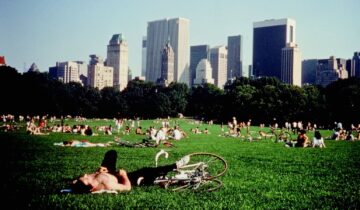Passport to Paris: Nineteenth-Century French Prints from the Georgia Museum of Art featured 46 works from the Georgia Museum of Art’s collection, highlighting a variety of printmaking techniques used by well-known artists of the nineteenth century. Particularly in France, these artists experimented with etching, lithography, and woodcut and adopted a range of themes and styles in portraying modern life. After the French Revolution, artists began to depict a greater variety of subjects, such as landscapes, portraits, and satires of everyday life.
Rural landscapes, a significant theme in art since the seventeenth century, experienced a rebirth in the hands of the Barbizon painter-printmakers. As seen in his etching Les Bêcheurs [The Diggers], Jean François Millet (1814-1875) centered his artistic life on the activities of rural life, particularly the lives of peasants, and he remained in Barbizon (near Fontainbleau, France) until his death in 1875. Charles François Daubigny (1817-1878), also associated with the Barbizon movement, captured rural life in the depiction of covered wagons in the etching Les Charettes de Roulage [Good Wagons]. Daubigny’s Voyage de Nuit [Night Journey] and other landscape etchings are often considered as precursors to later impressionist techniques.
Considered one of the greatest nineteenth-century etchers, Charles Meryon (1821-1868) traveled the world as a naval officer and was known to draw during his voyages. He resigned his naval commission in 1846 and moved to Paris to experiment with art. Chateau de Chenonceau [Castle of Chenonceau] captures his inspiration of the impressive architecture of the French castle in the finest details. Also considered one of the greatest etchers of the century, James Abbott McNeill Whistler (1834-1903), born in New England, studied in Paris before establishing himself in London and introducing the French practice of etching and lithography as a serious medium for painters.
Invented in 1798 in Germany, the process of lithography began as an inexpensive commercial process and became widely used by artists in the nineteenth century. This printing technique involves drawing on a stone surface with a crayon. The relative simplicity of the technique and the similarity in line and tonal quality to drawing appealed to artists such as Jean-Louis-André-Théodore Géricault (1791-1824), who is considered by some to be the father of the romantic movement of painting in France in the first half of the century. Honoré Daumier (1808-1879), a graphic satirist and master of the medium, was a prolific lithographer. One of Daumier’s prints from his Moeurs Conjugales [Marital Customs] series is included in the exhibition, as are prints by Paul Gavarni (1804-1866), who has been compared to Daumier.
The popularity of printmaking with impressionist artists contributed to the revival of the medium toward the end of the century. Edouard Manet’s (1832-1883) etchings titled L’Acteur Tragique [The Tragic Actor] and Olympia reflect the realistic, yet impressionistic style of his modern portraits. Mary Cassatt’s (1845-1926) La Coiffure [The Hairstyle], the only work in color in Passport to Paris, reflects the artist’s mastery of drypoint and aquatint in her prevalent theme of women and motherhood. James Jacques-Joseph Tissot’s (1836-1902) Le Hamoc [The Hammock] reflects an influence of Japanese prints in his depiction of a woman lying in her hammock. Other artists included in the exhibit are Pierre-Auguste Renoir, Odilon Redon, Henri de Toulouse-Lautrec, and Paul Gauguin.
Organized by the Georgia Museum of Art, University of Georgia, Athens, this exhibition was supported in part by the Georgia Council for the Arts through the appropriations of the Georgia General Assembly. The Council is a Partner Agency of the National Endowment for the Arts.









